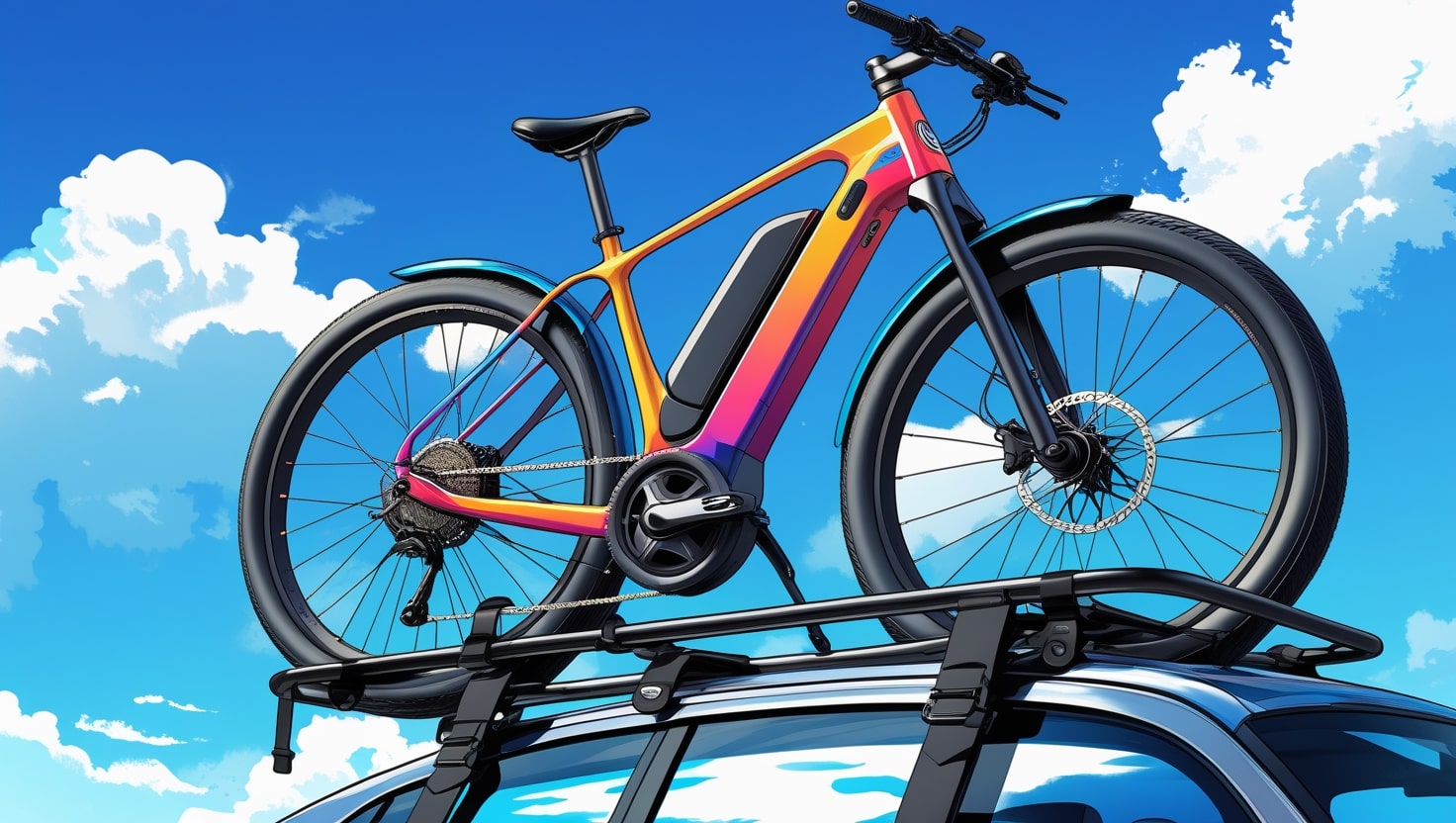When buying a new bike, understanding the key measurements that define the frame is important to ensure the machine fits and works for the type of riding you intend to do. This knowledge helps you get a bike that not only meets your needs but also enhances your overall biking experience.
If you’re planning to rent, it’s useful to know your frame’s measurements so you can ensure the rental will be comfortable to ride and can be adjusted to fit. Different manufacturers might measure sizes in different ways, so you need to look at some fundamental measurements to ensure you’re comparing apples to apples. Read on to learn about these measurements and how are bike frame sizes measured.
To ensure you get the right size for your road or mountain bike, our comprehensive guide to bike geometry explains how these measures affect handling. Even if you’re a roadie, most of the measurements are still significant. We offer advice on how to choose the right size frame for both road bikes and mountain bikes, including specific advice for choosing a women’s bike.
Bike geometry measurements
Below, we’ll explain how to measure the essential numbers that describe your bike. But first, here’s a brief overview of these key metrics:
- The top tube length is the horizontal measurement between the centerline of the head tube and the seat post.
- Seat tube length: distance between the centre of the bottom bracket and the top of the seat tube
- Reach: distance from the bottom bracket to the top of the head tube
- Stack is the vertical measurement from the bottom bracket to the top of the head tube.
- Wheelbase: distance between the front and rear axles
- Chainstay length: distance from the bottom bracket to the rear dropout
- Front centre: distance from the bottom bracket to the front axle
- Seat tube angle: angle of the seat tube in relation to the ground
- Head tube angle: angle of the head tube in relation to the ground
- Bottom bracket drop: difference in height between the wheel axle and crank
- Bottom bracket drop refers to the difference in height between the wheel axle and the crank axle.
Related: How to Measure Inseam for Bike
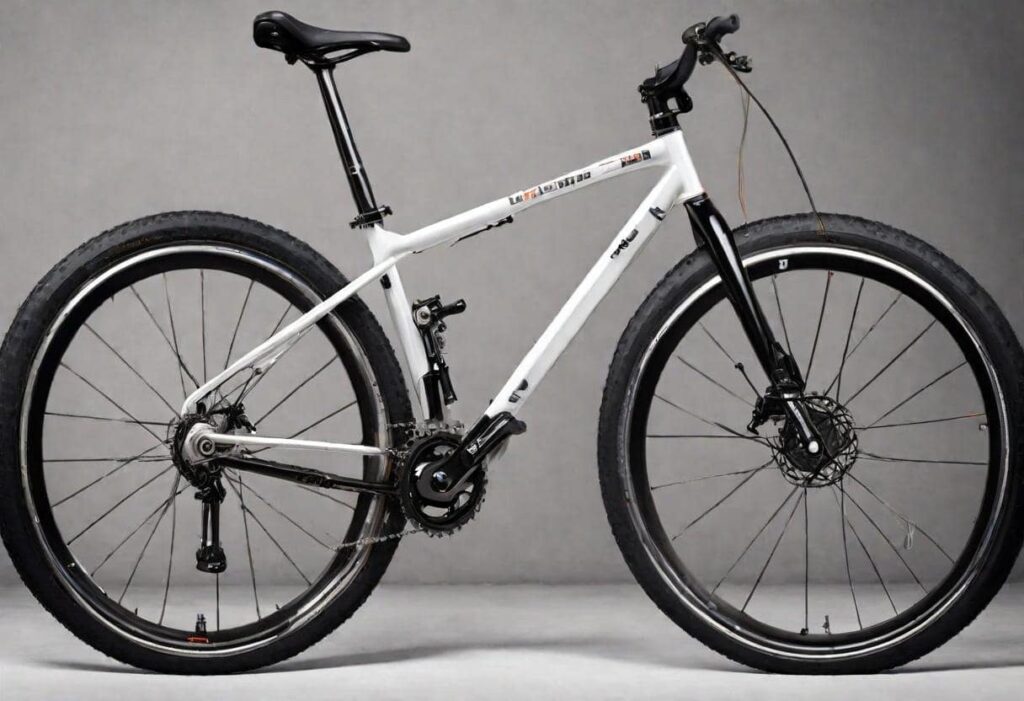
What you’ll need to measure a bike frame
Here you need four tools to measure bike frame
- Tape measure
- Use a clinometer to measure angles. There are free smartphone apps available for this purpose.
- Long spirit level (or you can use the clinometer app and a straight piece of wood)
- Plumb line (or you can improvise with string and a couple of blobs of Blu Tack)
Most bikes, whether road or mountain, are now measured in metric units, but some manufacturers still size mountain bikes in inches. Some brands, like Moots, even mix the two. We recommend you stick to metric units to keep things consistent.
If needed, you can always divide centimeters by 2.54 to switch to inches. You can usually find a geometry chart for all sizes of a current frameset on the maker’s site.
If your bike is a current model, it’s worth taking a copy of this because it will be more accurate than your measurements and a handy reference later.
How to measure top tube length
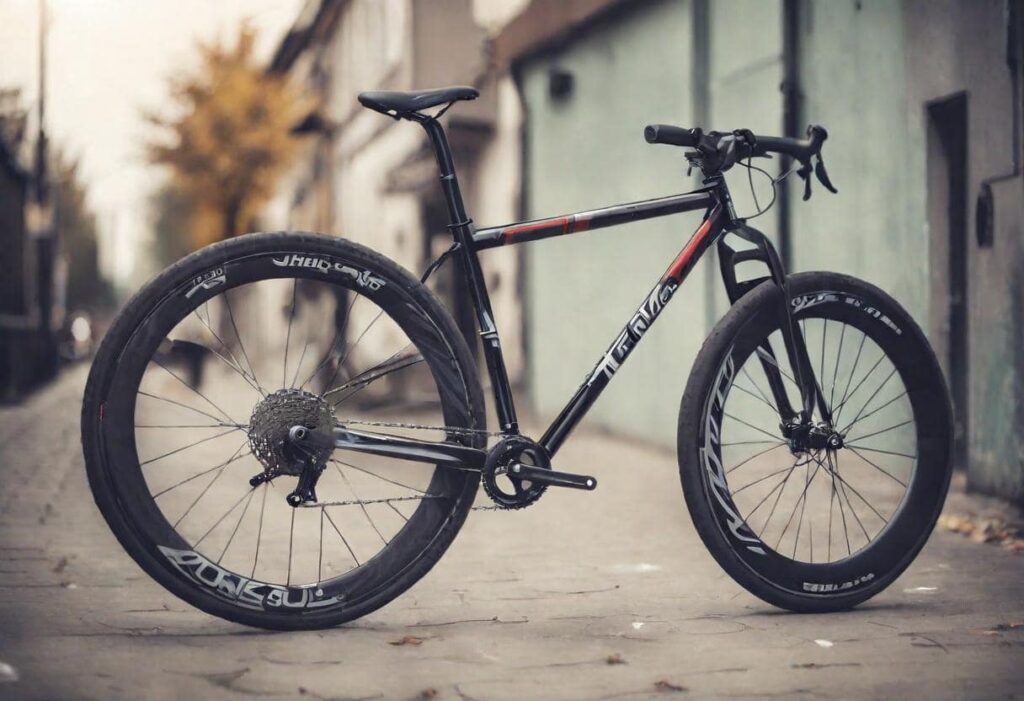
Most bikes used to have horizontal top tubes, but now many top tubes have a slope. When looking at a bike geometry table, you’ll usually see the real top tube length listed. However, for a consistent measure, regardless of the angle, you need to measure the horizontal top tube length, also known as the effective or virtual top tube in many geo charts. This is the horizontal distance between the centreline of the head tube and the centreline of the seatpost.
To measure this correctly, use a spirit level or a clinometer app to ensure your measure is truly horizontal. Many manufacturers size road bikes by top tube length, while mountain bikes are usually sized by frame size marked as S, M, L, etc. Some road bikes, like those from Merida, also use this system, with sizes like S, S/M, M/L, and L.
Each brand’s interpretation can vary. For example, Ridley’s size-S frames have a top tube length of around 54cm, which is equivalent to many other brands’ size-medium frames. It’s important to note that not all brands measure the virtual top tube length the same way. Colnago, for instance, records the horizontal distance from the head tube to a vertical line projected up from the top of the seat tube, which means their numbers might be smaller than other makers.
A 50s Colnago frame, for example, is equivalent to a 54cm top tube in many other brands. Always check the geometry chart provided by the manufacturer to get the most accurate measurements and ensure the best fit for your bike.
Related: How to Measure for Bike Helmet
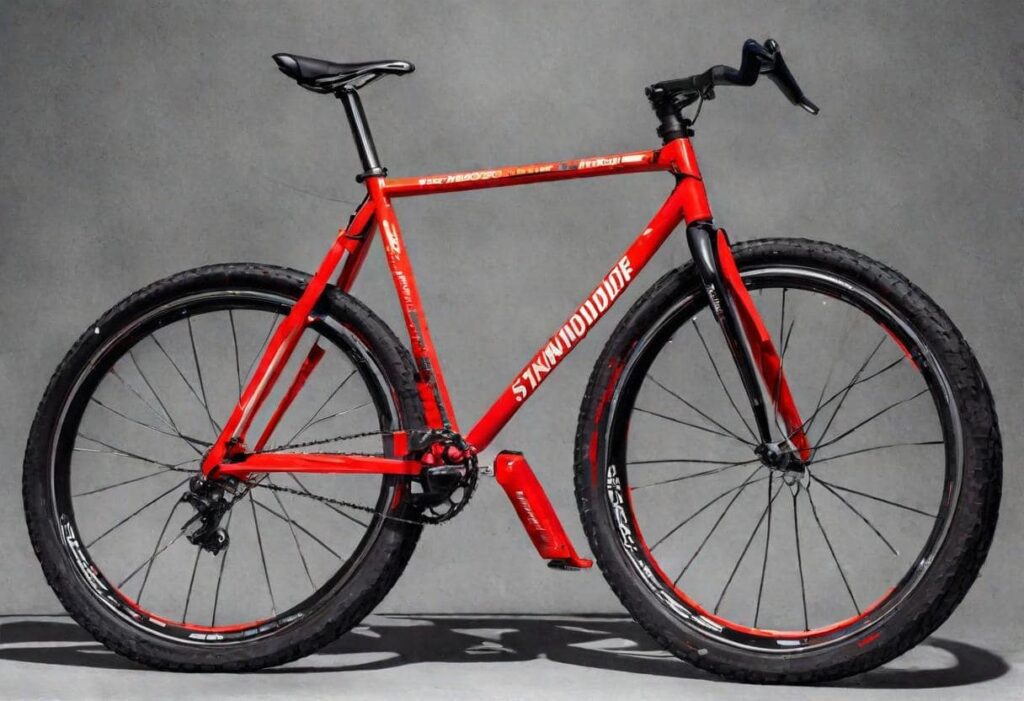
How to measure seat tube length
To measure seat tube length, measure the straight line distance from the center of the bottom bracket to the top of the seat tube. This measurement can be tricky because some bikes, like the Trek Madone, have an extension of the seat tube above the top tube junction, and others use a seatmast, making it difficult to compare dimensions with other bikes.
For mountain bikes, the seat tube often has a kink, so you shouldn’t follow the line of the tube itself, as this will make the measurement longer. Instead, line up a straight edge with the bottom bracket centre and the top of the seat tube and measure along this line to ensure you are getting the right measurement.
By following these steps, you can accurately measure the seat tube length of your bike, ensuring a better fit and more comfortable ride.
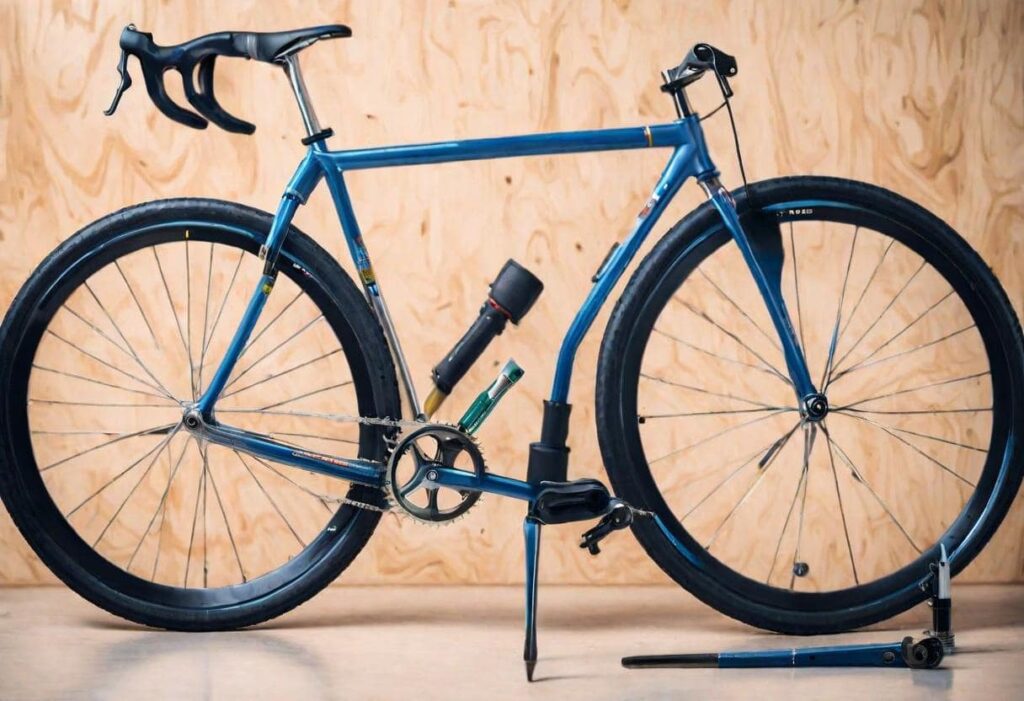
How to measure reach and stack
Understanding how to measure reach and stack is essential for getting the right fit for your bike. These measurements offer an advantage because they are independent of the frame design and provide consistent values.
Manufacturers now often show reach and stack values to help you better compare frames. This is important as traditional measurements like top tube and seat tube lengths can be a minefield to interpret.
To measure the reach, which is the horizontal distance from the bottom bracket to the top of the head tube, you’ll need a spirit level and a plumb line.Attach the plumb line to the end of the level, using Blu Tack if needed, ensuring the string hangs straight. Align the top edge of the spirit level with the centerline at the top of the head tube.
Move the level back and forth until the plumb line intersects with the center of the lower bracket spindle. Then, measure the distance between the top of the plumb line and the head tube to get the reach.
Another method to measure reach is to push the bike against a wall and measure the distance to the top of the head tube and the distance to the bottom bracket, then subtract one from the other. Ensure the measurement is horizontal for accuracy.
Stack is the vertical measurement from the bottom bracket to the top of the head tube.
Both access and stack measurements can be difficult to accurately capture. Using the plumb line method may require an extra pair of hands. It’s worth repeating the measurements to ensure they are consistent and accurate, providing you with the best possible bike fit.
How to measure wheelbase
Your frame’s wheelbase is the distance between the front and rear axles. This measurement is a key determinant of the bike’s ride quality and can vary with frame size. To measure the wheelbase, you need to set the fork straight ahead; otherwise, the measurement will be incorrect.
It’s worth repeating the measurement several times to ensure you get the same number. For better accuracy, measure the wheelbase on both sides of the bike and take the average. This method helps compensate if the fork isn’t perfectly straight.
How to measure chainstay length
The chainstay length is one of the key components that make up your wheelbase and it contributes significantly to your frame’s handling characteristics. A frame with shorter chainstays will typically feel more lively compared to one with longer stays.
To measure the chainstay length, find the straight-line distance between the centre of the bottom bracket axle and the centre of the rear dropout. This measurement is easy to measure with a ruler.

How to measure front centre
The front centre is a crucial component of the wheelbase, similar to the chainstay length but measured from the axle to the front dropout. This measurement affects handling and toe overlap with the front wheel. Although not often quoted by bike makers, some brands like BMC include it in their geometry charts.
It’s important to note that the wheelbase is not the simple sum of the chainstay length and the front centre because these measurements are not taken horizontally.
How to measure seat tube and head tube angles
The seat tube and head tube angles are important factors in determining a bike’s handling. More upright tube angles typically lead to nimble handling. To measure these angles, you can use a clinometer app on your smartphone.
For a straight seat tube, simply line up your phone and read the number from the app. Make sure your bike is upright and standing on a flat surface for accurate measurements.
If your seat tube has a kink, you’ll need to use a straight edge to follow the line from the bottom bracket shell to the top of the seat tube. Then, line up your phone with this edge to get the measurement.
For newer bikes with tapered head tubes, the angle of the front of the head tube may not match the angle of its centreline. For accurate angle measurements, hold your phone along the center line or use a straightedge to align the top and bottom centers of the head tube. If your bike has straight fork legs, the angle of the legs will be the same as the head tube angle, and you can measure this instead, ensuring the bike is standing vertically.
Another way to measure the head tube angle is to align the clinometer with the steerer tube extension over the head tube. This method provides a reliable way to get the correct angle, ensuring your bike is set up for optimal handling.
How to measure bottom bracket drop
The bottom bracket drop is the height difference between the centerline of the wheel axle and the crank axle. To measure it, find the height of the rear axle and the height of the bottom bracket, then subtract one from the other. This is a key measurement often quoted by bike brands in their geo charts.
How to measure bottom bracket height
To measure the bottom bracket height, find the distance from the ground to the centre of the bottom bracket shell. This is easy to measure, but be careful to keep your bike straight upright for an accurate reading. Unlike the bottom bracket drop, this measurement can be affected by your tyres, so make sure to inflate them to your usual running pressure.
Having all these measurements helps you size your frame correctly and make informed purchasing decisions in the future. Whether you are buying a new or second-hand road bike, a commuting bike, or a gravel bike, keeping your numbers safe means you won’t have to repeat the process.
Bike Frame Size Chart
Refer to a bike frame size chart to match your height and inseam length with the right frame size. Here’s a general guideline:
| Rider Height | Inseam Length | Suggested Frame Size |
|---|---|---|
| 5’0″ to 5’4″ | 27″ to 29″ | 13″ to 15″ |
| 5’4″ to 5’8″ | 29″ to 31″ | 15″ to 17″ |
| 5’8″ to 5’10” | 31″ to 33″ | 17″ to 19″ |
| 5’10” to 6’1″ | 33″ to 35″ | 19″ to 21″ |
| 6’1″ to 6’4″ | 35″ to 37″ | 21″ to 23″ |






